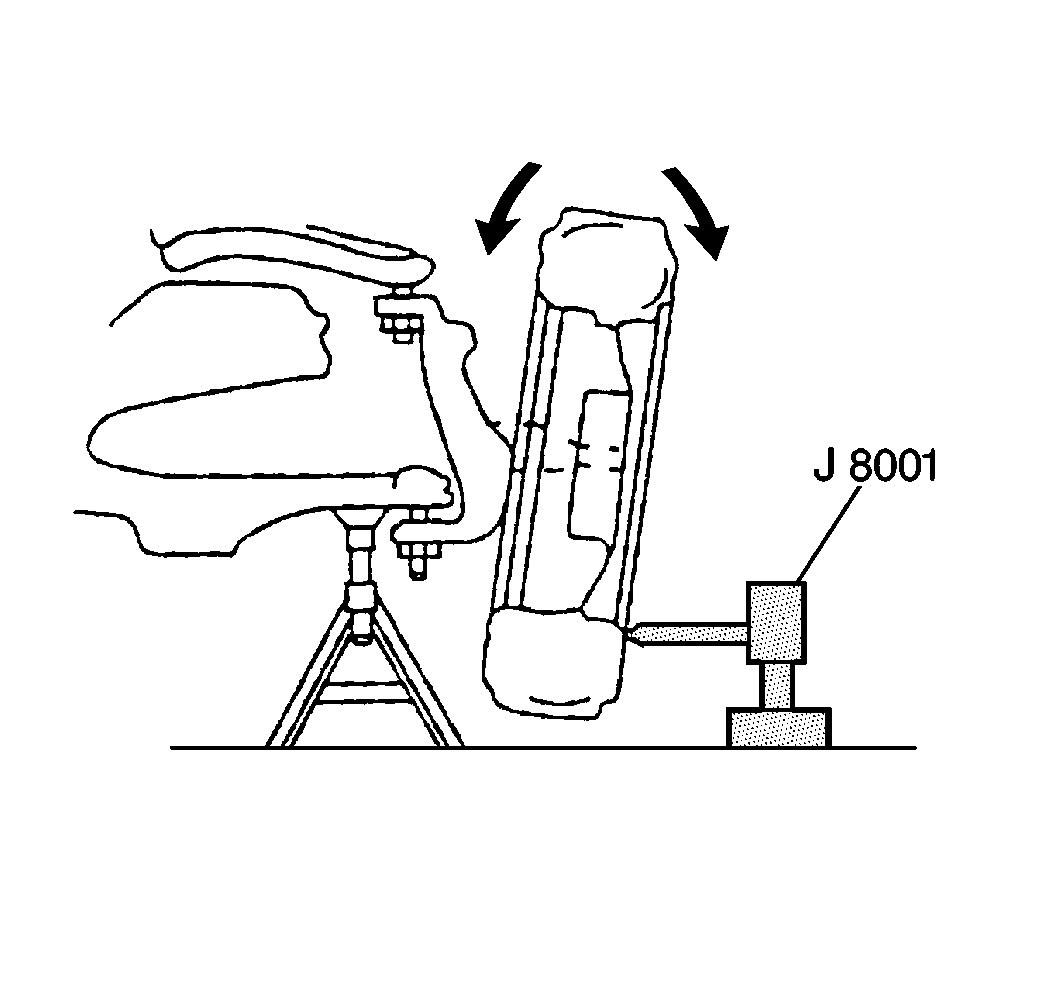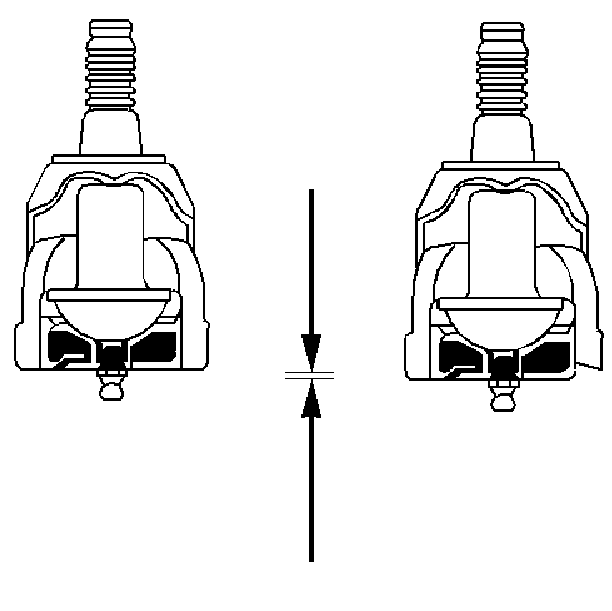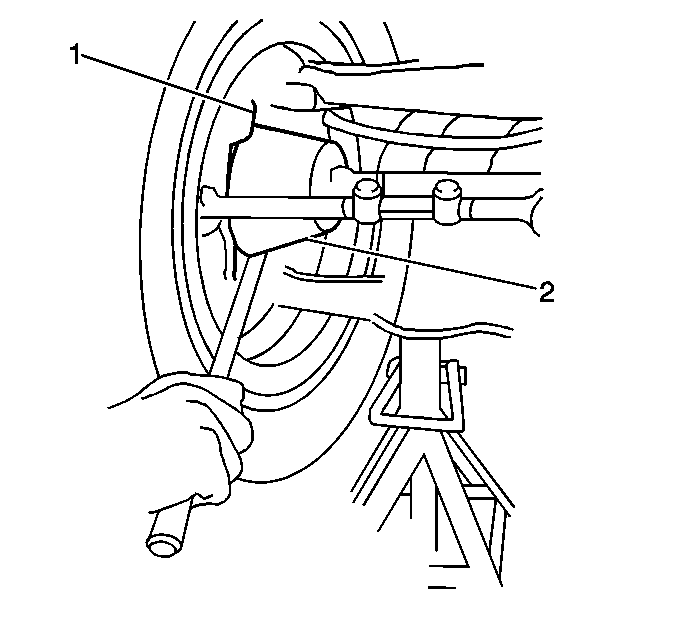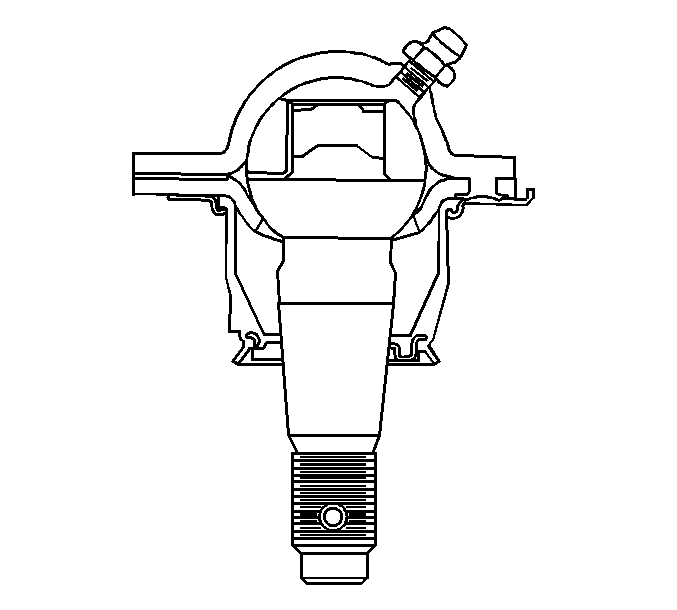
Important:
| • | The vehicle must rest on a level surface. |
| • | The vehicle must be stable. Do not rock the vehicle on the floor stands. |
| • | The upper control arm bumper must not contact the frame. |
- Raise and support the vehicle. Refer to
Lifting and Jacking the Vehicle
in General Information.
- Support the lower control arm with a floor stand or jack, as far outboard as possible, under the stabilizer bar bracket.
Important: If a seal is cut or torn, replace the ball joint.
- Clean and inspect the ball joints seals for cuts or tears. If the ball joint seals are damaged, replace the ball joint. Refer to
Upper Control Arm Ball Joint Replacement
or
Lower Control Arm Ball Joint Replacement
in Front Suspension.
- Check the wheel bearing for looseness. If looseness in the wheel bearing is present, refer to
Wheel Bearings Diagnosis
.
- Check the ball joints for horizontal looseness.
| 5.1. | Position the J 8001
dial indicator against the lowest outboard point on the wheel rim. |
| 5.2. | Rock the wheel in and out while reading the dial indicator. This shows horizontal looseness in both joints. |
| 5.3. | The dial indicator reading should be no more than 2.00 mm (0.080 in). If the reading is too high, check the lower ball joints for vertical looseness. |

Important: Do not support the lower control arm with a jack stand for a RWD vehicle, this will unload or cause compression on the wear indicator and will cause the wear indicator to give a false reading.
- For RWD vehicles, check the lower ball joints for wear and for vertical looseness using the following procedure:
| 6.1. | Remove the safety stand from under the lower control arm. |
| 6.2. | Inspect by sight the lower ball joint for wear. The position of the housing into which the grease fitting is threaded indicates wear. This round housing projects 1.27 mm (0.050 in) beyond the surface of the ball joint cover on a new lower ball joint. Under normal wear, the surface of the ball joint housing retreats inward very slowly. |
| 6.3. | First observe, then scrape a scale, a screwdriver, or a fingernail across the cover. If the round housing is flush with or inside of the cover surface, replace the lower ball joint. |

Notice: Do not pry between the lower arm and the wheel drive shaft boot or in
such a manner that the ball joint seal is contacted. Damage to the wheel drive
shaft boot will result (4WD).
- For 4WD vehicles, place a J 8001
dial indicator (1) against the spindle in order to show vertical movement.

- Pry between the lower control arm (2) and the outer bearing race (1) while reading the dial indicator. This shows vertical looseness in the lower ball joints. The lower ball joint may show some looseness.

- If the dial indicator reading is more than 3.18 mm (0.125 in), replace the lower ball joint. Refer to
Lower Control Arm Ball Joint Replacement
in Front Suspension.
- If the lower ball joint is within specifications, and there is too much horizontal looseness, check the upper ball joint for wear.





